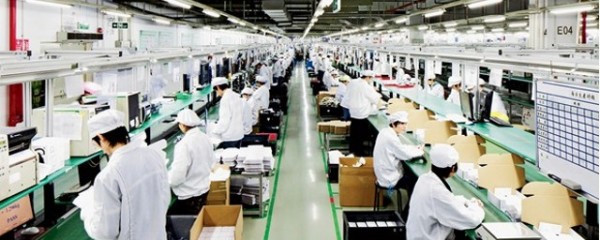31
Jul 2013
China’s Rising Costs
Companies that reevaluate their China-based manufacturing operations can remain competitive despite inflation.
Executives across China have been quick to mention rapidly increasing labor costs in recent years as one of their top concerns for their China operations. China’s labor costs in the urban manufacturing sector reached ¥31,000 ($4,579) per employee per year in 2010, more than doubling from just ¥12,700 ($1,534) in 2003. This represents a compound growth rate of 13.8 percent in renminbi (RMB), or 17 percent in dollars after taking RMB appreciation into account. China’s costs are growing at a faster rate than many other countries with low overall manufacturing costs, such as Vietnam, India, and Mexico. But this represents just the tip of the iceberg for foreign companies’ investment prospects in China.
According to analysis by InterChina Consulting, China has reached the turning point at which it can no longer be considered a low labor cost production base, and it will likely never return to that status. However, the negative implications of this trend have been exaggerated and distorted in many cases. Foreign companies should consider factors other than costs and adopt strategies to deal with the cost issue in a strategic and sustainable way.
For enterprises in China, there are critical decision-making factors to consider other than cost alone. These include productivity in China, proximity to the local market, proximity to a high-quality supplier network, and the availability of quality labor.
Cost inflation is evident above the iceberg, but what lies beneath?
Despite these cost increases, many foreign companies still consider China an important market. For the past 10 years, roughly 80 percent of executives have said that China is one of their companies’ top three global investment destinations, according to annual surveys by the American Chamber of Commerce in China. Over the same time period, approximately 70 percent of executives reported that their firms’ operations in China are profitable or very profitable.
Given this steady interest in China as a global investment destination, it is important to understand the rising labor costs against the larger context of China as a maturing, yet robust market. China’s market is one of the world’s largest and continues to grow at an enviable pace. Many observers also overlook the fact that China’s manufacturing sector productivity, which achieved a compound annual growth rate of 16.5 percent from 2004 to 2010, has increased rapidly in recent years. Productivity gains, which were achieved largely through investment, have successfully offset the impact of the fast-growing labor costs in the past. China is now, however, taking steps toward shifting to an economy driven by technology upgrades, innovation, and revamping of business models. This trend is likely to continue to offset, at least partially, the impact of rising labor costs in coming years. Though labor costs in Vietnam and other low-cost countries are approximately one-half to one-third less than Chinese labor, productivity in many low-cost countries is considerably lower than in China.
Rushing to “reshore”?
The issue of relocating away from China—or what some are calling the “reshoring” of manufacturing—has become a hot topic. Companies that have so far chosen to reshore their manufacturing facilities have been export-oriented companies with little to no customer base in China and limited prospects for establishing such a base. In the past, these companies only manufactured in China because of the cheap labor costs, and the nature of their business in China has been considerably labor-intensive. Factors such as concerns over quality, high shipping costs, and delays are likely to outweigh the diminishing labor-cost advantage.
Companies with a focus on China’s domestic market are likely to stay in China in the medium term, including the leaders in the value chain of the electronics, food and beverage, energy, chemicals, auto, pharmaceuticals, machinery and industrial goods sectors, in addition to the component and material suppliers involved in the value chain. Some export-oriented companies have started to balance their strategic focus in China for both export and for China’s market to respond to the market trend.
Adapting to a new reality
While it will be easy for manufacturers to remain in China in theory, it will become difficult to stay competitive in China in practice. Both capital- and labor-intensive operations will need new strategies to deal effectively with cost inflation and remain competitive in China.
Some companies will be able to further increase productivity to offset cost inflation, especially companies that could further automate assembly lines in their China operations. For example, in sectors such as home appliance components, many companies’ production setup is still heavily labor-intensive or only partially automated in China. In their home countries in Europe or the United States, facilities are equipped with state-of-the-art assembly lines worth several million dollars. However, facing high cost inflation in China, many companies have decided to gradually shift their production setup to a higher degree of automation. This is not only a defensive strategy to deal with labor costs, but also a proactive action to manage high labor turnover in China, and deal with shortages of skilled workers and operators. One of InterChina’s clients plans to automate two of its assembly lines to replace 18 semi-skilled workers. In this case, the company will save money even when taking into account the annual depreciation of the expensive machinery.
Cost inflation is a reality in China, but China’s domestic market will remain attractive enough to bring continued rewards to those companies able to stay and localize to beat the competition. Luckily, new tools are available for foreign companies in China, though each solution has to be tailor-made for each company’s individual situation and must strike a balance between the cost issue and other critical strategic issues.
Source from: http://www.chinabusinessreview.com/chinas-rising-costs/
See more at: http://www.sbeintl.com/































